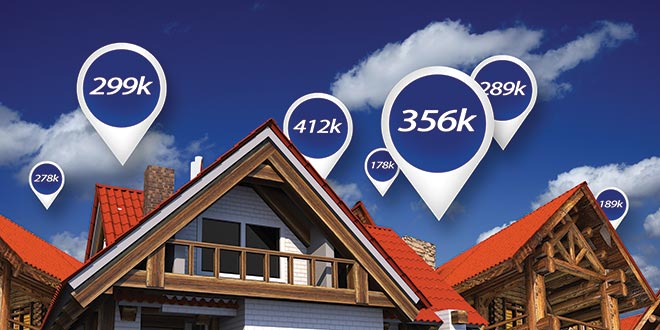Solid demand and steadily increasing home prices have been two of the biggest housing headlines
in 2017. To learn more about housing trends this year and predictions going into 2018, Hardware Retailing spoke with George Ratiu, director of quantitative and commercial research at the National Association of Realtors (NAR). He oversees a portfolio focused on macroeconomic trends, commercial real estate and global investments. Overall, Ratiu and his organization maintain a moderately optimistic outlook for the 2018 housing market. Read more about the state of the overall home improvement market in the annual Market Measure report.
Hardware Retailing (HR): What trends have you seen develop in the 2017 U.S. housing market?
George Ratiu (GR): This year, the housing market saw pretty solid demand, especially during the first half of the year. From the midpoint of the year on, there was an extremely tight inventory, both for new home sales and especially for existing homes. A lot of buyers are finding a very tight market, which prevents them from buying homes, and in turn, lowers sales. Just as importantly, we’ve seen a pickup in sale prices each month this year.
HR: New housing starts and existing home sales are increasing slightly over 2016 levels. What does that say about the housing market?
GR: There’s sort of a domino effect at work here. Many homebuilders are not building enough new inventory, so first-time homebuyers are finding it increasingly difficult to enter the housing market due to higher prices and more competition.
HR: In August, housing prices reached their 66th consecutive month of gains. NAR said high prices have prevented many prospective homebuyers from entering the housing market. How might continually rising existing home prices impact the housing market in the long term?
GR: Rising prices are good and bad. They’re a reflection of market dynamics. But when we look at price trajectory from the perspective of a growing population, comprised mostly of Generation X, millennials and Generation Z, rising home prices, mortgage prices and high student debt, then accelerating home prices will harm the housing market in the long term because first-time homebuyers simply won’t be able to afford it.
HR: How do you foresee tax reform impacting the housing market?
GR: For homeowners, tax reform is a very important issue. As the proposal currently stands, it’s likely
to have an impact on the prices of homes across the country. By our estimate, it would be a roughly
10 percent decline in home prices. When you look at homeowners who are staring at a 10 percent loss in their homes, they’re looking at an immediate $26,000 loss for an average-priced house. I don’t think any homeowner will be in a position to think about remodeling or building a new home given that significant loss. For new home sales, I foresee a tremendous impact as well. I see a negative impact for new home sales and the remodeling industry if the tax reforms go forward as currently written.
HR: What do 2017 U.S. housing trends say about the economy overall?
GR: Considering that before the recession, it was the housing industry that put the economy
in recession, in a sense it’s been housing that brought the economy back. With price appreciation, homeowners’ wealth has also been increasing, which has meant that homeowners have been a whole lot more optimistic and have been spending a lot more, which drives the economy. In 2017, due to a slowing
housing market, we’re likely restraining some level of economic growth. Going into 2018, my expectation is that at the current rate, we’ll continue to see soft economic gains.
HR: What growth and challenges have the residential and commercial real estate
markets experienced this year?
GR: The one common challenge that both residential and commercial markets have experienced this year is a tightness of inventory. From there, the other common thread is price appreciation. We’ve seen a 6 percent price appreciation on the residential side, which is significant because it far outpaces the trajectory of income growth. Obviously that impacts a lot of potential buyers. When we look at the fact that interest
rates are expected to increase, that impacts first-time buyers. I see tightness of inventory, accelerating prices, strict mortgage underwriting standards and availability of capital as the major factors in residential and commercial real estate markets.
HR: What should homeowners and retailers be mindful of as we head into 2018?
GR: Consumers have been feeling a lot more optimistic about the market and have been spending a lot more freely. We see that in auto sales and household appliance sales. I think going into 2018, as long as unemployment and wages remain on an upward trajectory, consumer optimism and spending are likely to grow.
I think consumers should pay attention to tax reform. There are significant changes proposed to the treatment of taxes for individuals and corporations and any of those changes are likely to impact their bottom lines. So consumers and retailers should pay attention to Congress and make their voices heard.
For retailers, I think the outcome of tax reform is likely going to alter a lot of business practices moving forward. If we’re seeing a decrease in wealth across the board, that’s likely going to reduce the optimism and lead to lower spending, which for retailers, means a reduction in sales in the future.
 Hardware Retailing The Industry's Source for Insights and Information
Hardware Retailing The Industry's Source for Insights and Information








